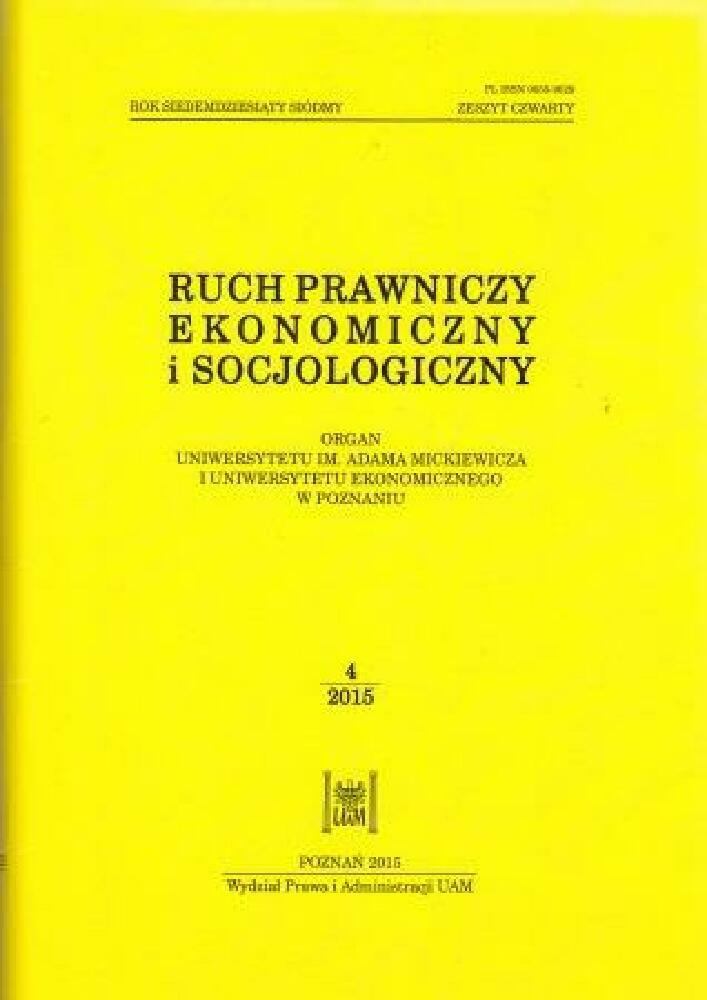Abstract
The purpose of this article is to present how a comparative legal research can contribute to effective transplantation of legal solutions. The first three sections clarify the notions of: ‘transplantation of law’, ‘comparative law analysis’, and ‘functional legal equivalent.’ The interdependence between those notions is also indicated. The article focuses in particular on the initial stage of a comparative study in which a comparatist lawyer chooses an equivalent legal solution. In comparative studies translations of legal terms are of major importance. A comparative translations has its own specific features. These differences are examined by comparative lawyers who then produce different theories on the subject. Their concepts are presented in section IV.2. The study also accounts for other cases affecting the result of a comparative research, and namely the absence of a functional equivalent resulting in a lack of an objective way to translate a given term.
The overall conclusion arising from the article is that a comparative translator should take into account the context and purpose of the study for which it is made, and in this way influence the outcome of the entire scientific research, affecting, in consequence, the shape of the new institution, that is a legal transplant.
References
Damirli, M.A. (2011), Comparative law hermeneutics: cognitive possibilities, [w:] Butler, W.E., Kresin, O.V., Shemshuchenko, I.S. (eds.), Foundations of Comparative Law. Methods and Typologies, London: 84-91.
Gordley, J. (2012), The functional method, [w:] Monateri, P.G. (ed.), Methods of Comparative Law, Northampton: 107-119.
Gordley, J. (2012), The functional method, [w:] Monateri, P.G. (ed.), Methods of Comparative Law, Northampton.
Kozieja-Dachterska, A. (2006), Großwörterbuch der Wirtschafts- und Rechtssprache, Band 1: Deutsch-polnisch, Warszawa.
Liukkunen, U. (2007), The method of understanding and an internal viewpoint – on the interface between comparative law and private international law, Zeitschrift für vergleichende Rechtswissenschaft 106: 141-157.
Mattei, U. (2008), Compartive law and Critical Legal Studies, [w:] Reimann, M., Zimmermann, R., Comparative Law, Oxford: 815-835.
Miller, R.A., Zumbansen, P.C. (2012), Comparative Law as Transnational Law, Oxford.
Nelken, D. (2002), Legal transplant and beyond: of disciplines and metaphors, [w:] Harding, A., Örücü, E. (eds.), Comparative Law in the 21st Century, London-New York: 19-34.
Örücü, E. (2004), Enigma of Comparative Law: Variations on Theme for the Twenty-first Century, Leiden-Boston.
Örücü, E. (2007), A general view of ‘legal families’ and of ‘mixing systems’, [w:] Örücü, E., Nelken, D. (eds.), Comparative Law. Handbook, Oxford-Portland 2007: 169 -187.
Pozzo, B. (2012), Comparative law and language, [w:] Bussani, M., Mattei, U. (eds.), Cambridge Companion to Comparative Law, Cambridge: 88-113.
Quitmann, K. (2011), Eigentums- und Besitzschutz im deutschen und englischen Recht: Rechtsvergleichende Analyse des Spannungsverhältnisses zwischen Eigentum und Besitz, Berlin.
Radwański, Z. (2005), Zobowiązania. Część ogólna, Warszawa.
Röver, J.H. (1999), Vergleichende Prinzipien dinglicher Sicherheiten. Eine Studie zur Methode der Rechtsvergleichung, München.
Szymczak, I. (2014), Metoda nauki o porównywaniu systemów prawnych, Ruch Prawniczy, Ekonomiczny i Socjologiczny 76(3): 37-49.
Zieliński, M. (2012), Wykładnia prawa. Zasady, reguły, wskazówki, Warszawa.
License
Copyright (c) 2015 WPiA UAM

This work is licensed under a Creative Commons Attribution-NonCommercial-NoDerivatives 4.0 International License.




